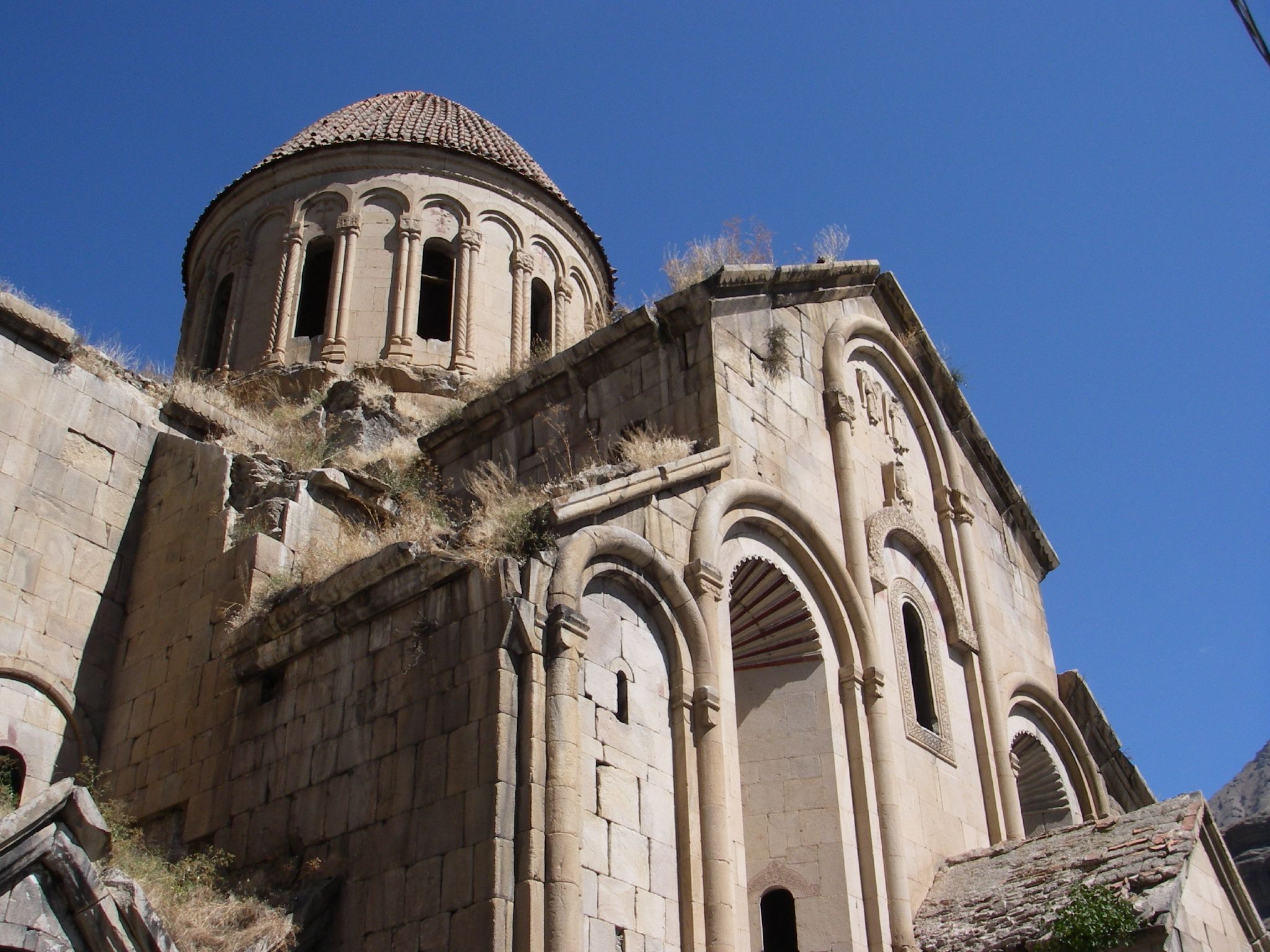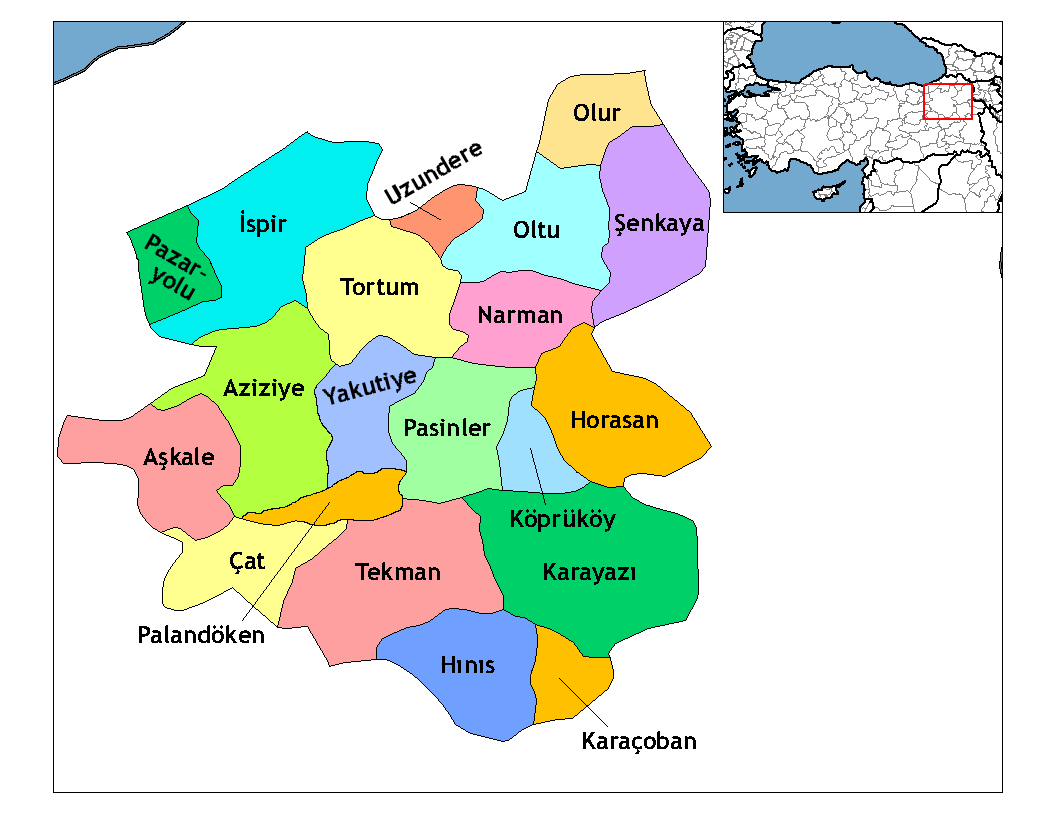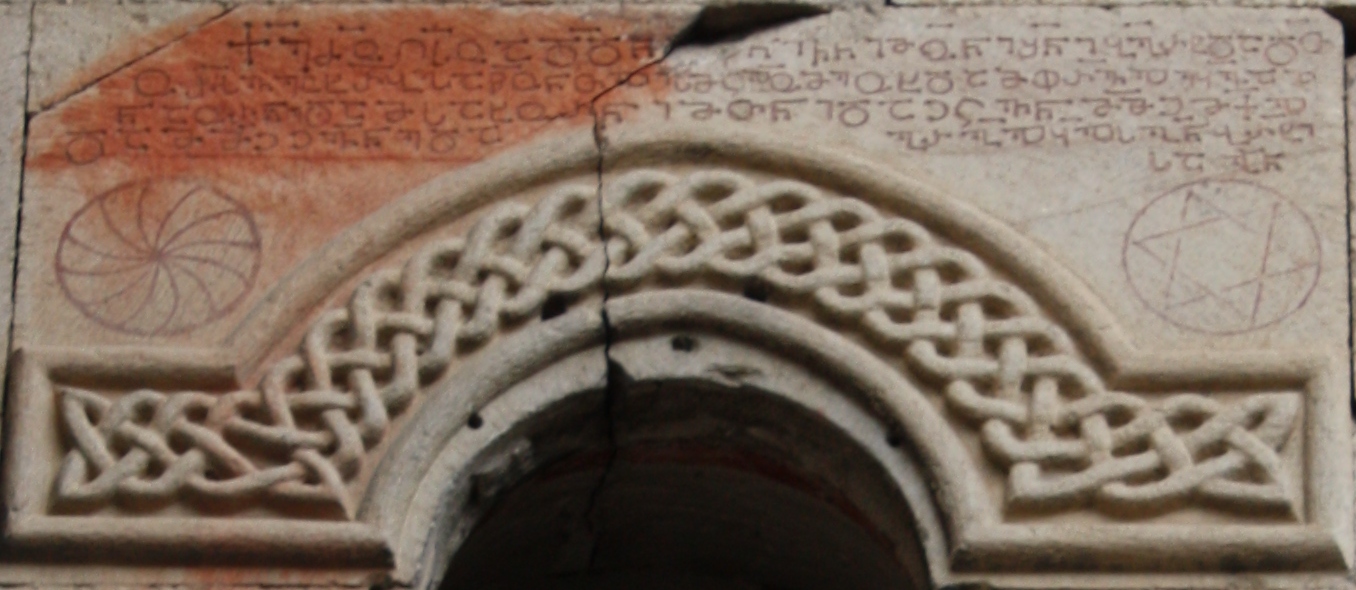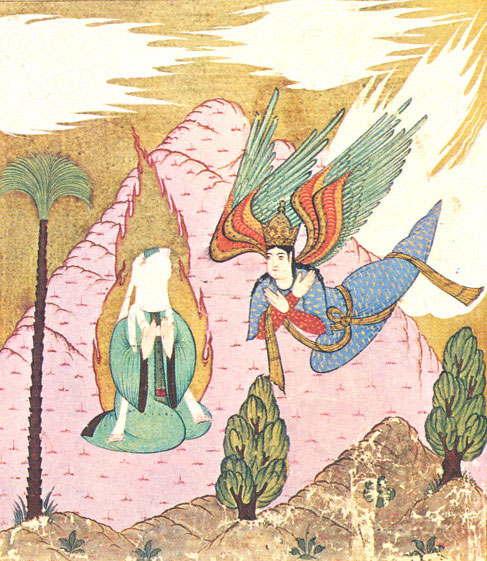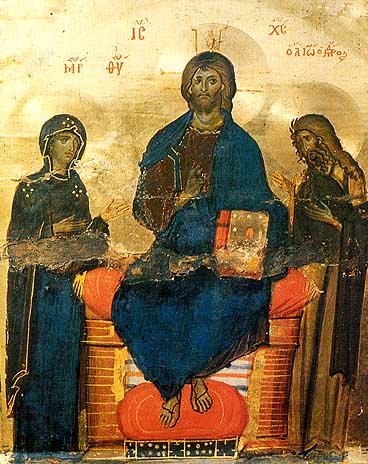|
Oshki
Oshki ( ka, ოშკი ; or ) is a Georgian Eastern Orthodox monastery from the second half of the 10th century located in the historic province of Tao, now part of the territory of Turkey. The main church, dedicated to St John the Baptist, was built between 963 and 973. The monastery is located in the village of Çamlıyamaç, in northeastern Erzurum Province, bordering Artvin Province. Oshki monastery was a major centre of Georgian literature and enlightenment during the Middle Ages. The monastery is considered "one of the largest and architecturally most complex buildings produced anywhere in the Eastern Christian world." It is considered one of the four Great Cathedrals of the Georgian Orthodox world. Architectural sculpture and figurative reliefs The construction of the monastery at Oshki was sponsored by the Grand duke/King Bagrat II of Tao and David III of Tao. The blind arches are an important part of the whole decoration. In Oshki they stretch along the oute ... [...More Info...] [...Related Items...] OR: [Wikipedia] [Google] [Baidu] |
Bagrat II Of Tao
Bagrat II ( ka, ბაგრატ II) (died 966) was a Georgian prince of the Bagratid dynasty of Tao-Klarjeti who ruled the Duchy of Upper Tao from 961 until his death in 966. A figure whose position within the Bagration dynasty remains unclear, he came to the throne after a coup d'état against his father, but did not manage to remain duke for long. Biography Bagrat was the eldest son of Adarnase V of Tao, a Kouropalates and influential political leader of the Georgian states during the Abkhazian occupation of Kartli, and a daughter of David I of Klarjeti. Information about his life is lacking in detail, but it is known that he took part with his younger brother David in a plot against his own father, forcing the latter to abdicate and join the monastic orders against his will in 961. This coup allowed Bagrat to become Duke of Upper Tao, but there is no record of the Byzantine dignity of Kouropalates being passed on after the event. Bagrat's short reign is poorly documente ... [...More Info...] [...Related Items...] OR: [Wikipedia] [Google] [Baidu] |
David III Of Tao
David III Kuropalates (, ''Davit’ III Kurapalati'') or David III the Great (დავით III დიდი, ''Davit’ III Didi''), also known as David II, (c. 930s – 1000/1001) was a Georgia (country), Georgian prince of the Bagrationi, Bagratid family of Tao-Klarjeti, Tao, a historic region in the Georgian–Armenian marchlands, from 966 until his murder in 1000 or 1001. ''Curopalates, Kuropalates'' was a Byzantine Empire, Byzantine Byzantine aristocracy and bureaucracy, courtier title bestowed upon him in 978 and again in 990. David is best known for his crucial assistance to the Byzantine Macedonian dynasty in the 976–9 civil war and his unique role in the political Unification of the Georgian realm, unification of various Georgian polities as well as his patronage of Christianity, Christian culture and learning. Between 987 and 989, David joined his friend Bardas Phokas the Younger, Bardas Phocas in a revolt against the Byzantine emperor Basil II, but was defeated an ... [...More Info...] [...Related Items...] OR: [Wikipedia] [Google] [Baidu] |
Erzurum Province
Erzurum Province () is a province and metropolitan municipality in the Eastern Anatolia Region of Turkey. Its area is 25,006 km2, and its population is 749,754 (2022). The capital of the province is the city of Erzurum. It is the fourth largest province in all of Turkey. It is bordered by the provinces of Kars and Ağrı to the east, Muş and Bingöl to the south, Erzincan and Bayburt to the west, Rize and Artvin to the north and Ardahan to the northeast. The governor of the province is Mustafa Çiftçi, appointed in August 2023. The province has a Turkish majority. Geography The surface area of the province of Erzurum is the fourth biggest in Turkey. The majority of the province is elevated. Most plateaus are about above sea level, and the mountainous regions beyond the plateaus are and higher. Depression plains are located between the mountains and plateaus. The southern mountain ranges include the Palandöken Mountains (highest peak Büyük Ejder high) and t ... [...More Info...] [...Related Items...] OR: [Wikipedia] [Google] [Baidu] |
Uzundere
Uzundere () is a municipality and district of Erzurum Province, Turkey. Its area is 505 km2, and its population is 7,625 (2022). The mayor is Muhammet Halis Özsoy ( BBP). Visitor attraction Oshki, a historic Georgian Orthodox monastery from the second half of the 10th century. Composition There are 18 neighbourhoods A neighbourhood (Commonwealth English) or neighborhood (American English) is a geographically localized community within a larger town, city, suburb or rural area, sometimes consisting of a single street and the buildings lining it. Neighbourh ... in Uzundere District: Turkey Civil Administration Departments Inventory. Retrieved 12 July 2023. * Altınçanak * Balıklı * Çağlayan * Çamlıyamaç * Çaybaşı * Cevizli * Cömertler * Dikyar * Erikli * Gölbaşı * Kirazlı * Merkez * Muratefendi * Sapaca ... [...More Info...] [...Related Items...] OR: [Wikipedia] [Google] [Baidu] |
Great Cathedrals (Georgian Orthodox)
Great Cathedrals () is a term used in historiography and architecture that refers to four large Georgian cathedrals built in the 10th and 11th centuries AD. The first of these cathedrals was Oshki, one of the most important architectural and religious centers in the Tao-Klarjeti historical region. Second one was Svetitskhoveli, first built as a basilica in the second half of the 5th century and significantly rebuilt in 1010-1029 under the supervision of architect Arsukidze. The third Great Cathedral was the Temple of Bagrat, erected in Kutaisi during the reign of Bagrat III as the main cathedral of his kingdom and consecrated in honor of the Assumption of Mary in 1003. The last of the four Great Cathedrals was Alaverdi built in the first quarter of the 11th century.{{Cite book , last=Djobadze , first=Wachtang Z. , url=https://www.worldcat.org/oclc/1232085015 , title=Adreuli šua saukuneebis kʻartʻuli monastrebi istoriul Taoši, Klarjetʻsa da Šavšetʻši , date=2007 , ... [...More Info...] [...Related Items...] OR: [Wikipedia] [Google] [Baidu] |
Tao (historical Region)
Tao ( ka, ტაო) is a historical Georgia (country), Georgian district and part of historic Tao-Klarjeti (historical region), Tao-Klarjeti region, today part of the Eastern Anatolia Region, Turkey, Eastern Anatolia region of Turkey. Its name derives from the ancient proto-Georgian inhabitants of this area, known as Taochi. History Antiquity The history of Tao could be traced to the emergence of the tribal confederation of Diauehi, Diauchi (Taochi, Tayk, Taochoi, Tao) at 12–8th century BC. Diauchi was engaged in war with the powerful kingdom of Urartu, and the inscriptions of the Urartu kings Menua ( 810–786 BC) and Argishti I of Urartu, Argishti ( 786–764) reveal the wealth and power of this kingdom, which was possibly proto-Georgian speaking.A. G. Sagona. ''Archaeology at the North-East Anatolian Frontier'', p. 30. In the 8th century BC, Diauchi was destroyed by the neighboring Colchis and Urartu and part of its territory was annexed by the Colchis. In the 4th-3rd ce ... [...More Info...] [...Related Items...] OR: [Wikipedia] [Google] [Baidu] |
Bagrationi Dynasty
The Bagrationi dynasty (; ) is a royal family, royal dynasty which reigned in Georgia (country), Georgia from the Middle Ages until the early 19th century, being among the oldest extant Christianity, Christian ruling dynasties in the world. In modern usage, the name of the dynasty is sometimes Hellenization, Hellenized and referred to as the Georgian Bagratids, also known in English as the Bagrations. The #Origins, origins of the dynasty are disputed. The early Georgian Bagratids gained the Principality of Iberia through Royal intermarriage, dynastic marriage after succeeding the Chosroid dynasty at the end of the 8th century. In 888 Adarnase IV of Iberia restored the Georgian monarchy; various Unification of the Georgian realm, native polities then united into the Kingdom of Georgia, which prospered from the 11th to the 13th century. This period of time, particularly the reigns of David IV of Georgia, David IV the Builder (1089–1125) and of his great-granddaughter Tamar of Ge ... [...More Info...] [...Related Items...] OR: [Wikipedia] [Google] [Baidu] |
Borjgali
Borjgali ( ka, ბორჯღალი; also Borjgala or Borjgalo; Borçgali in Laz) is a Georgian symbol of the Sun and eternity. The Borjgali is often represented with seven rotating wings over the tree of life which can be used to create various shapes and variations and is considered one of the main symbols of Georgian culture. Etymology The term ''Borjgali'' translates to "the flow of time" from Megrelian ''borj'' "time" and ''gal'' "pass" or "flow". The word is believed to derive from the Megrelian term ბარჩხალი (''barchkhali''), which means "brilliance" or "glitter." Other scholars believe its origin is from Old Georgian ბურჯი (''burji'') "time" and "ღალ" (''ghal'') "holy fruit" or "harvest," together meaning "holy fruit sprouting from time." Usage This pre-Christian symbol was widely used in both western (Colchis) and eastern Georgia (in Georgian architecture's ''Dedabodzi'', "mother-pillar") as part of a Darbazi in the Kura–Araxes ... [...More Info...] [...Related Items...] OR: [Wikipedia] [Google] [Baidu] |
Star Of David
The Star of David (, , ) is a symbol generally recognized as representing both Jewish identity and Judaism. Its shape is that of a hexagram: the compound of two equilateral triangles. A derivation of the Seal of Solomon was used for decorative and mystical purposes by Kabbalah, Kabbalistic Jews and Muslims. The hexagram appears occasionally in Jewish contexts since antiquity as a decorative motif, such as a stone bearing a hexagram from the arch of the 3rd–4th century Khirbet Shura synagogue. A hexagram found in a religious context can be seen in a Leningrad Codex, manuscript of the Hebrew Bible from 11th-century Cairo. Its association as a distinctive symbol for the Jewish people and their religion dates to 17th-century Prague. In the 19th century, the symbol began to be widely used by the History of the Jews in Europe, Jewish communities of Eastern Europe, ultimately coming to represent Jewish identity or religious beliefs."The Flag and the Emblem" (MFA). It became repr ... [...More Info...] [...Related Items...] OR: [Wikipedia] [Google] [Baidu] |
Gabriel
In the Abrahamic religions (Judaism, Christianity, Islam), Gabriel ( ) is an archangel with the power to announce God's will to mankind, as the messenger of God. He is mentioned in the Hebrew Bible, the New Testament and the Quran. Many Christian traditions – including Eastern Orthodoxy, Catholicism, Lutheranism, and Anglicanism – revere Gabriel as a saint. In the Hebrew Bible, Gabriel appears to the prophet Daniel (biblical figure), Daniel to explain his visions (Daniel 8:15–26, Daniel 9, 9:21–27). The archangel also appears in the Book of Enoch and other ancient Jewish writings not preserved in Hebrew. Alongside the archangel Michael (archangel), Michael, Gabriel is described as the guardian angel of the Israelites, people of History of ancient Israel and Judah, Israel, defending it against the angels of the other peoples. In the New Testament, the Gospel of Luke relates the Annunciation, in which the angel Gabriel appears to Zechariah (New Testament figur ... [...More Info...] [...Related Items...] OR: [Wikipedia] [Google] [Baidu] |
Deesis
In Byzantine art, and in later Eastern Orthodox iconography generally, the Deësis or Deisis (, ; , "prayer" or "supplication") is a traditional iconic representation of Christ in Majesty or Christ Pantocrator: enthroned, carrying a book, and flanked by the Virgin Mary and St. John the Baptist, and sometimes other saints and angels. Mary and John, and any other figures, are shown facing towards Christ with their hands raised in supplication on behalf of humanity. Early examples often appeared on the templon beam in Orthodox churches or above doors, though icons and devotional ivories also feature the Deesis. After the development of the full iconostasis screen there was room for a larger "Deesis row" or "Great Deesis" of full-length figures, and the number of figures expanded, both in Byzantium and in Russia. Usually this row is above the level of the doors, and usually below (sometimes above) the row depicting the Twelve Great Feasts. The central Christ is therefore a ... [...More Info...] [...Related Items...] OR: [Wikipedia] [Google] [Baidu] |
Laz Language
The Laz or Lazuri language () is a Kartvelian languages, Kartvelian language spoken by the Laz people on the southeastern shore of the Black Sea. In 2007, it was estimated that there were around 20,000 native speakers in Turkey, in a strip of land extending from Melyat to the Georgian border (officially called Lazistan until 1925), and around 1,000 native speakers around Adjara in Georgia (country), Georgia. There are also around 1,000 native speakers of Laz in Germany. Laz is not historically a written language or literary language. As of 1989, Benninghaus could write that the Laz themselves had no interest in writing in Laz. Classification Laz is one of the four Kartvelian languages also known as South Caucasian languages. Along with Mingrelian language, Mingrelian, it forms the Zan languages, Zan branch of this Kartvelian languages, Kartvelian language family. The two languages are very closely related, to the extent that some linguists refer to Mingrelian and Laz as dial ... [...More Info...] [...Related Items...] OR: [Wikipedia] [Google] [Baidu] |
